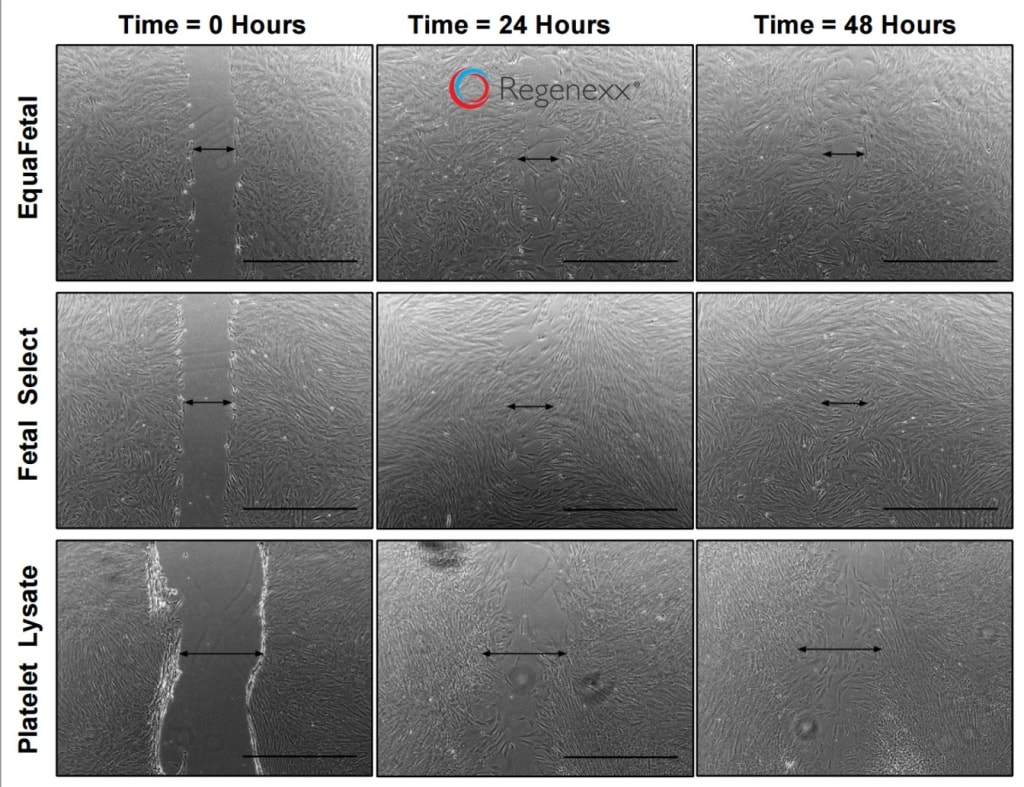How Do Stem Cells Heal?
How do stem cells heal? A picture is worth a thousand words, so take a look above. This is an experiment using the facilities of our advanced Regenexx research lab in Colorado. What’s fascinating is it gives an immediate sense of how stem cells do their job.
The experiment is known as a “scratch test”. In this case, the researcher took a plate where mesenchymal stem cells (MSCs) had attached and made a small micro scratch through the cells. You see those in the left column. Then the cells grown in different media (one for each row) were allowed to keep doing what they naturally do for two days. You see them closing the gap, even the massive one on the bottom left.
How does this work? MSCs love spreading out a bit and trying to completely cover a surface. When they do that, the cells look to see if they are touching other MSCs. If not, then they crank up proliferation and begin to divide and look for new territory. What’s great about MSCs is that once they’re done covering a surface and begin to touch each other, they display a property called “contact inhibition”. This means that they automatically stop growing and switch from a proliferation mode into wanting to differentiate into some other tissue. In fact, it’s exploiting this phenomenon which allows them to be grown in culture. In that situation, they’re seeded at low density in a specialized flask and they naturally begin trying to cover the surface by growing more of themselves. Just before they cover 80% of the flask, the lab technician uses an enzyme (trypsin) to get them off the plastic surface and reseeds them in more flasks at a lower density again, causing the cells to stay in that proliferation phase. This is repeated until you either have the desired cell number or the cells naturally begin to slow down their growth.
The upshot? Watching MSCs close a gap tells you a lot about how they work to heal injuries. They act like little workmen who naturally know when to spread out and divide to create more workers or when the job is done and it’s time to “punch out”!

If you have questions or comments about this blog post, please email us at [email protected]
NOTE: This blog post provides general information to help the reader better understand regenerative medicine, musculoskeletal health, and related subjects. All content provided in this blog, website, or any linked materials, including text, graphics, images, patient profiles, outcomes, and information, are not intended and should not be considered or used as a substitute for medical advice, diagnosis, or treatment. Please always consult with a professional and certified healthcare provider to discuss if a treatment is right for you.
